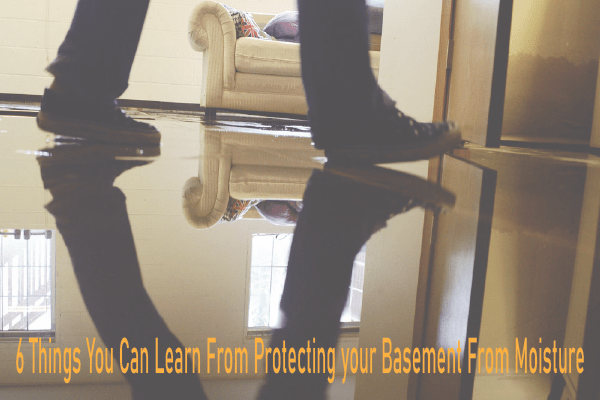Best Basement Waterproofing for Beginners
Best Basement Waterproofing for Beginners
Blog Article
Not known Factual Statements About Best Basement Waterproofing
Table of ContentsSee This Report on Best Basement WaterproofingSome Ideas on Best Basement Waterproofing You Should KnowThe Best Strategy To Use For Best Basement WaterproofingNot known Incorrect Statements About Best Basement Waterproofing Not known Details About Best Basement Waterproofing
AdvantaClean's qualified experts and specialists will certainly locate the water source. If wall surface or slab splits are present, we will inject polyurethane and epoxies right into the fractures and secure the concession, avoiding additional moisture from going into.
If there's condensation outside of the foil, you have high moisture in your basement. Repair it with a portable space dehumidifier or a whole-house humidifier system as opposed to waterproofing items. If the foil has condensation on the inside surface (next to the wall surface), the soil around your house may be normally damp from a high water table or poor soil drainage.
You can waterproof simply your interior walls, which may address the issue. Once they dry, they adhere completely to concrete and masonry walls.
The Ultimate Guide To Best Basement Waterproofing
Concrete water resistant layers can not be applied to formerly painted surface areas; examine the tag. Understood as densifiers, they are suitable only for walls that have not been repainted or secured.
You clean, roll, or spray it on much more thickly one gallon covers just 75 square feet, not the 300 square feet typical with common paint. Water-proof paint is great for do it yourself application. You can use it over painted surface areas, and paint over it once it's healed (one gallon prices $37).
It can cost $10,000 to $15,000, depending upon the job needed. Outside waterproofing involves digging deep into throughout the home fully depth of the structure walls, then setting up a water resistant finish or membrane layer covered by water drainage panels. The panels provide a simple course for water to flow down to an outside French drain at the end of your structure.
A basement without waterproofing is kind of like that. Your cellar doesn't want to go through a downpour without correct protection simply as much as you don't want to.
The Best Basement Waterproofing Diaries
But if you've done your research study, you would certainly know there are 2 kinds of waterproofing: exterior and interior. It can get puzzling what they both mean, which one's a better financial investment, and what will really keep the water out. Do not stress, we assembled this blog site to quickly specify both methods for you and go over the pros and disadvantages of each.
Outside waterproofing is a waterproofing method that includes securing your home from the exterior. It's sort of like a moat around a castle. It includes excavating a trench around your entire residence to the foundation (concerning 8 to 10 feet down). The structure wall surfaces are after that cleansed, sealed, and covered with a waterproof membrane layer or sealer.

A Biased View of Best Basement Waterproofing
It's a more involved process that requires you could try these out digging up your backyard, which is expensive and taxing. Exterior waterproofing entails eliminating everything bordering the residence, including porches, driveways, sidewalks, landscape design, air conditioner devices, decks, and so forth. If any of the work was done inaccurately and water is still entering your cellar, there isn't much you can do to deal with or repair it.
Interior basement waterproofing involves waterproofing from the within. Any water that leakages right into your basement is rerouted prior to it touches your floor.
It's a reliable technique to water resistant your cellar. The disadvantage of interior basement waterproofing mainly has to do with the installment process.
Some Known Facts About Best Basement Waterproofing.
To conclude, exterior and indoor basement waterproofing are both effective approaches of safeguarding your home from water damages. Exterior waterproofing produces a barrier that avoids water from entering your home, while interior waterproofing reroutes water that does enter your home. And it is very important to keep in mind that exterior waterproofing is a pricey and turbulent installation procedure when compared to indoor waterproofing.
Whichever method you choose, see to it you select a trusted and check here trustworthy service provider for the job. Both techniques call for seasoned employees to manage the job. If you have any questions concerning basement waterproofing, please connect to us. And if you remain in our service location and have water in your basement, call us for a totally free, no-obligation home assessment.
You can complete our kind here, begin a conversation in the bottom right-hand edge, or call us at 1-800-827-0702.
Report this page